Japan
-
Busch, Simone K.
Simone K. Busch
Born in Berlin, Germany
Living in Tokyo, Japan
http://simonekbusch.blogspot.jp/ -
Decker, Warren
 Warren Decker
Warren Decker
Born in the United States in 1977
Living in Japanwebsite https://disorienteering.wordpress.com/
Warren Decker is a writer and teacher based in Osaka. In addition to writing haiku and senryu he performs rhythmical poems as Enjambmental.
-
Facey, Erica
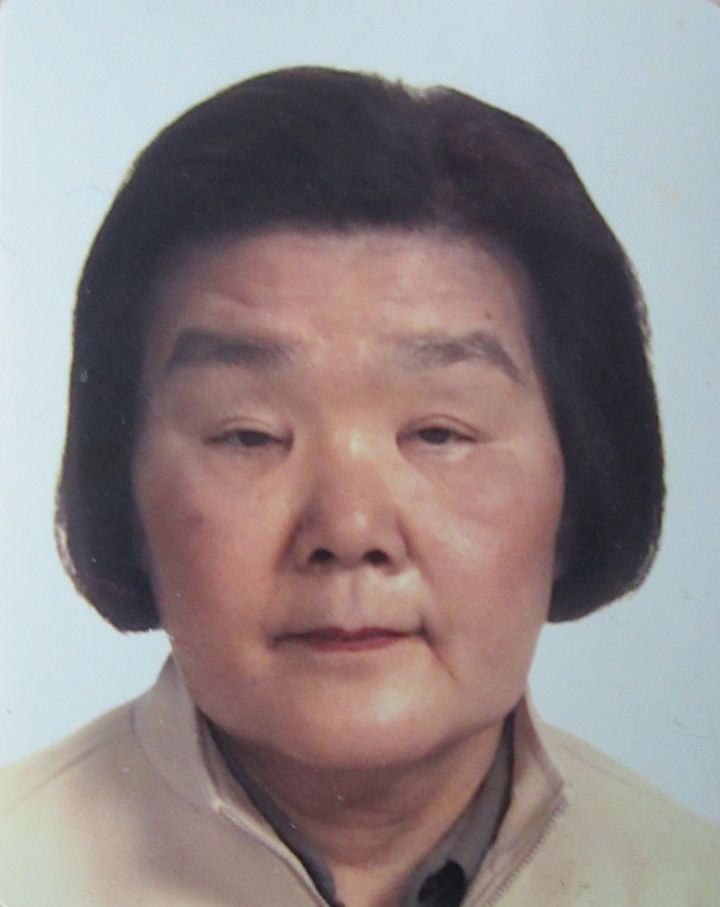 Erica Facey
Erica Facey(6 Novenber 1945 – 21 July 2022)
Erica Facey was born on 6 November 1945 in Nishinomiya, a district in the city of Osaka, Japan. Her maiden name was Kitagawa Kikuko [Japanese: 北川喜久子]. She went to school in Osaka and proved to be a very able pupil. She wanted to go to university but at that time it was difficult for women to do so. She eventually went to the woman's University of the Sacred Heart, Tokyo, which had been set up in 1948. She graduated from there with a BA in English. She was unable to find a suitable position in Japan and decided to come to Britain and study Linguistics at the School of Oriental and African Studies (SOAS), London University, registering first for an MA then continuing to a PhD. She completed a dissertation titled “Structural Analysis of the Japanese Language Using Montague Grammar” and was awarded her PhD in 1981. Facey presented a number of papers at conferences on linguistics and had a teaching post at SOAS. However, she found academic life difficult, especially the need to search for funding and decided to take another path.
By this time she was married and had a young daughter, which took up a lot of her time. Erica Facey had always been interested in haiku, which she had studied in Japan. She decided to become active in the haiku world and promoting haiku in Britain as this could be easily fitted in with her other activities. She always wrote her haiku in Japanese only later translating them into English. The Japanese versions were published in the Japanese haiku magazine ‘Hototogisu’ (ホトトギス) and in various saijiki (haiku almanacs). Facey was sufficiently involved in the British haiku world to be an original member of The British Haiku Society in 1990. However, at that time, she found it very inward looking and not matching her aspirations.
Her feelings were that there was a real need to attract beginners, especially schoolchildren, and provide a platform for work related to haiku, even if not specifically haiku. Haiku should not just be for the specialist. To this end she set up the organisation ‘Time Haiku’ and while a number of people were involved the poet Gavin Ewart gave the necessary encouragement and the Waltham Forest Arts Council provided financial support. In 1997 through the Time Haiku Group she published a collection of her haiku in Japanese and English titled Flying.
Time Haiku magazine was then founded and the first edition published in 1995 with Erica Facey as the Editor. Although Doreen King and later Diana Webb took over the duties of editing Time Haiku, Facey remained involved in an administrative capacity until 2021, as newsletter editor and as author of short articles about Japanese kigo (season words) and poetic techniques. In 2004 she edited a selection of poems, Time Haiku Anthology. Erica Facey also published three books of haiku, which were composed in Japanese with English translations: Gliding (2001), Diving Grebe (2005), and Images (2015).
Erica Facey died in London on 21 July 2022.
We are very grateful to Erica’s husband Owen Facey for contributing to the Living Legacies feature with her biography.
Publications:
- Flying (Time Haiku Group, 1997)
- 滑翔 / Gliding (France-Do, Co., Ltd, Tokyo, 2001)
- 潜鳰 / Diving Grebe (France-Do, Co., Ltd, Tokyo, 2005)
- 心象 / Images (France-Do, Co., Ltd, Tokyo, 2015)
Selected works:
from Gliding (2001)The broken columns
holding the space between them:
the summer seaAt the waterside
reed shoots burst forth,
all else is withered.Striking stripes
half hidden in the stones:
a frozen butterflyThe robin came,
selected a withered leaf
and left the garden.from Diving Grebe (2005)
Her dress flowing
in the spring sunshine;
the headless statue.Seeing nothing
hearing the sound of flying away:
withered reed bed.Directly under
the swirling flock of seagulls
endless withered fields.At the spring market
asking a reduction on the
God of wealth and longevity.from Images (2015)
By every rain
the Autumn is deepened;
my life too.Showy daffodils
by the side of the road:
a traffic accident.Visible experience
yes but the hidden too,
winter cherriesWinter camellia:
it is simply
What it is.Sources:
- https://haikupedia.org/article-haikupedia/haiku-in-the-united-kingdom-england/
- https://haikupedia.org/article-haikupedia/erica-facey/
- https://thehaikufoundation.org/omeka/items/show/4124
- https://www.geraldengland.co.uk/revs/bs177.htm
- https://www.japansociety.org.uk/review?review=495
- https://www.japansociety.org.uk/review?review=704
- https://www.hsa-haiku.org/frogpond/FrogpondIndex.pdf
- Time Haiku, ed. Diana Webb, issue #57, 2023
-
Freiling, Mike
 Mike Freiling
Mike FreilingBorn: 1950, San Francisco, CA
Living in: Kyoto, Japan and Vancouver, WAWebsite: www.shimenawa.org
This email address is being protected from spambots. You need JavaScript enabled to view it. Bio: Mike was a co-founder of MIT’s literary magazine Rune (1976), and a Henry Luce Scholar at Kyoto University (1977). In addition to haiku, Mike translates both classical and contemporary Japanese poetry, and writes on topics including contemporary life, culture, economics, and the search for Transcendence.
-
Gilbert, Richard
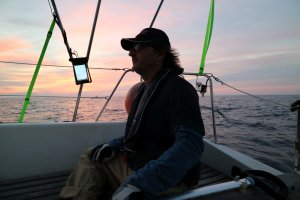 Richard Gilbert
Richard GilbertBorn 1954 in Connecticut, USA
Living in Kumamoto, Japan
http://gendaihaiku.com
http://sailing-across-oceans.org
Hear the poet reading a selection of his haiku
Contact the poet
-
Ikeda, Sumiko (池田澄子)
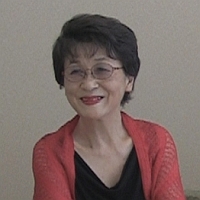 Ikeda Sumiko (池田澄子 Ikeda Sumiko)
Ikeda Sumiko (池田澄子 Ikeda Sumiko)Born 1936 in Kamakura, Kaganaga Prefecture, Japan
Grew up in Nîgata Prefecture. Began composing haiku in her 40s. Studied haiku with Horî Kei and Mitsuhashi Toshio. Won the 36th Modern Haiku Association Award in 1989, and So Sakon Haiku Award in 2006. Became a Kadokawa Haiku Award judge. Her major haiku collections are, Sky Garden [Sora no niwa] (1998); Before I Knew I Was Born as a Human [Itsushika hito ni umarete] (1993); Gendai Haiku Collection Vol. 29: Ikeda Sumiko [Gendai haiku bunko 29: Ikeda Sumiko] (1995); The Sailing Ship [Yukufune] (2000); Story on a Soul [Tamashî no hanashi] (2005); Dear Sir in Reply [Haihuku] (2011).Translations into English by Richard Gilbert & Ito Yuki (Gendaihaiku, 2014)
-
Kaneko, Tōta (金子 兜太)
Kaneko Tōta
(The poet's family name is Kaneko)
Born 1919 in Saitama Prefecture, Japan -
Kawana, Tsugio, (川名つぎお)
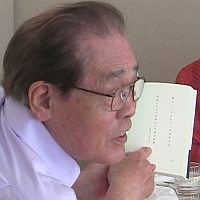 Kawana Tsugio (川名つぎお)
Kawana Tsugio (川名つぎお)Born 1935 in Tokyo, Japan
Currently, Secretary of the Modern Haiku Association (Gendaihaikukyôkai), and General Manager of the Yearbook Department. He is a professional screenwriter and playwright. He is the winner of the Okinawa Memorial Day Haiku Prize, 2004. In 1957, he entered Kokugakuin University, and founded the Film Club. That same year he produced the short film, Chîsana gen'ei [The Little Mirage: An Urban Boy’s Dream, 20 min.], the first independent movie produced by a student in Japan (excepting those of the Fine Arts program at Nihon University).
In 1958, he focused on the problem of education in rural areas, producing the short film, Yama ni ikiru ko ra [The Children Live in a Mountain; 27 min.]. This was his first professional work. In 1965, he founded the Partisan Style Poetry Book Club [Paruchizan shiki shishu no kai], and gathered donations for the publication of his own book of poetry. As a result, Hatachi no gûwa [The Fables of Twenty] was published.
In 1968, he became deeply involved in significant social movements of the era — anti-war, anti-nuclear, anti-establishment, etc. He published his book of poetry, Seishun no kigen [The Origin of Adolescence], then made a film featuring night-school students in poverty, Dakkan soshite kaihô [Get Back and Liberate It; 87 min.]. This film created newfound enthusiasm among student-movement activists to produce their own works, especially via Zengakuren [the All-Japan Federation of Student Self-Governing Associations]. Moreover, he edited a poetic anthology of a group of young activist-authors, Eikyû kakumei no koiuta [Love Song of Permanent Revolution], published in 1969. His major haiku collections are Tei [Degree] (Modern Haiku Association Press, 1992), Jin [Questions] (Modern Haiku Association Press, 2005), and Ani [However] (Modern Haiku Association Press, 2014).Translations into English by Richard Gilbert & Ito Yuki (Gendaihaiku, 2014)
-
Maeda, Hiroshi (前田弘)
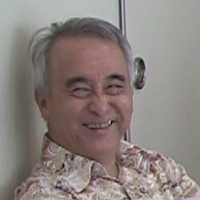 Maeda Hiroshi (前田弘)
Maeda Hiroshi (前田弘)Born 1939 in Osaka, Japan
Moved to Hokkaido in 1943, and grew up there. In high school, he founded the haiku journal-group, Kaze [Wind], which later became Haguruma [Gears]. Studied haiku with Suzuki Ishio, and moved to Tokyo in 1963. He joined the Modern Haiku Association in 1982, becoming Executive Director [kanji], Chief of the Yearbook Department, and Chief of the Advertising Department of the MHA, in 2001. Became the official leader of the Haguruma journal-group in 2006. Later, became the chief editor of the Gendai Haiku Journal of the MHA. Won the 2010 “Second Prize,” 65th Modern Haiku Association Award. In the following year, won the “First Prize” of the 66th Modern Association Award.
Translations into English by Richard Gilbert & Ito Yuki (Gendaihaiku, 2014)
-
Morisu, Ran (森須蘭)
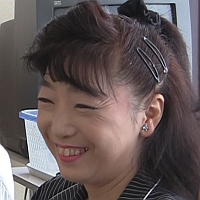 Morisu Ran (森須蘭)
Morisu Ran (森須蘭)Born 1961 in Tokyo, Japan
Graduated from Ferris Women’s Junior College (now Ferris Women’s University). She began writing haiku during her days at Ferris, and joined the MHA in 1993. Within the MHA, she worked as a committee member of the Youth Department, the Study Department, the Junior Study Department, and the Information Technology Department. Today, she works as a committee member of the Yearbook Department, and is the Executive Director of the Tokyo Chapter of the MHA. She is also a judge of the “ITO-EN Ôi Ocha New Haiku Contest.” She has led her journal-group Dionysian [Saien] since 2000. Her major haiku collections include, Only to See You [Kimi ni au tame] (2000), and The Sky Ship [Sorafune] (2010). She has also published educational books, such as Memorizing 100 Haiku to become a Master (2009).
Translations into English by Richard Gilbert & Ito Yuki (Gendaihaiku, 2014)
-
Ôi, Tsuneyuki (大井恒行)
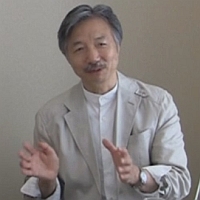 Ôi Tsuneyuki (大井恒行)
Ôi Tsuneyuki (大井恒行)Born 1948 in Yamaguchi Prefecture, Japan
Attended Ritsumeikan University night school, in Kyoto. Although he wasn't a member of any sectarian group, he was committed to the Ampo protests of the 1970s. In his Junior year, he dropped out of school and went to Tokyo to become a writer. Today he is a member of the Modern Haiku Association and the Japan Writers’ Association. He is a judge of the Modern Haiku Association Awards for New Poets. He is also President of the National Bookstore Workers, and the Workers Union Connection Council.Translations into English by Richard Gilbert & Ito Yuki (Gendaihaiku, 2014)
-
Suzuki, Hideo
Born 1946 Tokyo, Japan
Living in Sanda, Hyogo prefecture, Japan. -
Takajo Mitsuhashi
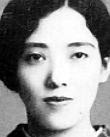 Mitsuhashi Takajo
Mitsuhashi Takajo(24 January 1899 – 7 April 1972)
One of the great Japanese haiku women poets Mitsuhashi Takajo was born on 24 January 1899 near Narita, Chiba. She was a haiku poet of the Shōwa period. She was an admirer and disciple of Akiko Yosano. She got married in 1922 and started writing haiku under the influence of her husband, but then later turned to experimental haiku along with other women poets. By 1936 she became part of a group that founded the short-lived Kon (dark blue) publication and in 1940 had the collection Himawari or Sunflowers published. In 1953 she became involved in Bara (薔薇, dt. "Rose") - a progressive magazine of avant-garde poets who allowed experimental haiku. She has been referred to as a religious ascetic or one who led a life of asceticism and spiritual concentration. She is said to have written works of self-alienation of the vanishing of the empiric Ego in the Void, which according to Kenneth Rexroth “resembles Kierkegaard’s rather than the Buddhist concept.” A statue of her is at Shinshoji Temple. Back in 1964, Blyth, in his History of Haiku, identified her as "the chief woman writer of haiku in Japan."
Her last collection, in 1970, dealt somewhat with death as she had been ill for years.
She is also placed as one of the "4 Ts" of Japanese female haiku poets, the other three being Tatsuko Hoshino, Nakamura Teijo, and Hashimoto Takako.
She died on 7 April 1972.
Haiku collections:
- Himawari (向日葵, dt. "Sunflower") in 1940;
- Uo no hire (Fins of a Fish)
- Hakkotsu (白骨, dt. "The Bleached bones") in 1952;
- Shida-jigoku (歯朶地獄, dt. "The Fern Hell") in 1961;
- Buna (ぶな, dt. "Beech"), 1970.
Selected work:
climb this tree
and you'll be a she-devil
red leaves in the sunset glow
up on a hydro pole
the electrician turns
into a cicada(Far Beyond the Field: Haiku by Japanese Women, by Makoto Ueda, Columbia University Press, 2003, pp.109-110)
*
winds of autumn -
water less transparent
than the fins of a fish(Haiku Mind, Patricia Donegan, Shambhala Publications. 2008, p.195)
*
O bird’s singing!
The dead walk
on the plain of the sea.
The hair ornament of the sun
has sunk
into the legendary sea.(Women Poets of Japan by Ikuko Atsumi; Kenneth Rexroth, New Directions, 1977, p. 80)
*
春水のそこひは見えず櫛沈め 三橋鷹女
shunsui no sokoi wa miezu kushi shizume
not able to see
spring water’s bottom…
I sink my comb(from “Haiku Dai-Saijiki” (“Comprehensive Haiku Saijiki”), Kadokawa Shoten, Tokyo, 2006)
*
口中一顆の雹を啄み火の鳥や
Kōchu ikka no hyō wo tsuibami hi no tori ya
A hailstone held
in its beak,
the firebird soars(From Mitsuhashi Takajo Zenkushū (Collected Haiku of Mitsuhashi Takajo, 1976)
*
老いながら椿となつて踊りけり
oinagara tsubaki to natte odorikeri
as I get older
I will become a camellia
and dance and dance秋の蝶です いつぽんの留針です
aki no choo desu ippon no tomebari desu
I am an autumn butterfly
I am just one pin(Tr. Gabi Greve)
Sources:
- http://wkdhaikutopics.blogspot.co.uk/2007/03/mitsuhashi-takajo.html
- https://en.wikipedia.org/wiki/Mitsuhashi_Takajo
- http://www.hsa-haiku.org/frogpond/2009-issue32-3/essay.html
- http://www.haikuworld.org/books/farbeyond.review.html
- https://translate.google.co.uk/translate?hl=en&sl=de&u=https://de.wikipedia.org/wiki/Mitsuhashi_Takajo&prev=search
- http://omamorifromjapan.blogspot.co.uk/2011/08/terifuri-ningyoo-weather.html
- http://www.japannavigator.com/2011/07/haiku-stones-in-kanto-mitsuhashi-takajo.html
- https://fayaoyagi.wordpress.com/2016/04/14/todays-haiku-april-14-2016/
- http://bungeikan.jp/international/detail/10/
- Mitsuhashi Takako zenshū (Rippū Shobō, 1889), vol. 2, pp. 203-207;
- Hashimoto Takako, Mitsuhashi Takako shū (Asahi Shimbunsha, 1984), pp. 33-336;
- Women Poets of Japan by Ikuko Atsumi; Kenneth Rexroth, New Directions, 1977, p. 80; p.153;
- Haiku Mind, Patricia Donegan, Shambhala Publications, 2008, p.195.
-
Takatô, Akane (高遠朱音)
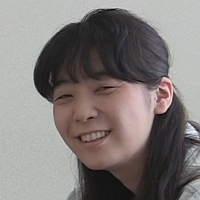 Takatô Akane (高遠朱音)
Takatô Akane (高遠朱音)Born 1985 in Tokyo, Japan (birth name Kaneko Risa)
Won the “ITO-EN Ôi Ocha New Haiku Contest” in 1999. Joined the MHA in 2000, as its youngest-ever member. In 2007, graduated from Risshô University and began work in web design. At the same time began work as a committee member of the Junior Study Department of the MHA. Her major haiku collection is Night Flyer (2009).
-
Taneda, Santōka (種田 山頭火)
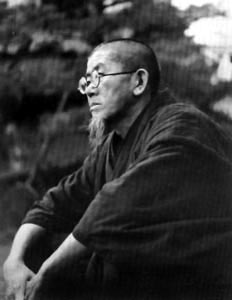 Taneda Santōka (種田 山頭火)
Taneda Santōka (種田 山頭火)3 December 1882 – 11 October 1940
-
Tennakoon, Anusha
Anusha Tennakoon
Born 1978 in Sri Lanka
Living in Osaka, Japan
Contact the poet
